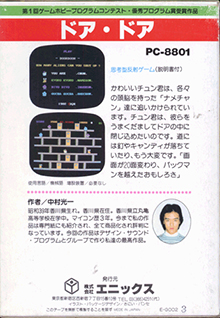 W
WThe Japanese company Enix was established as a publisher of home computer games in August 1982, after founder Yasuhiro Fukushima noticed how popular these were in the United States. Fukushima had no programming knowledge and did not employ internal programmers or game designers. Instead, he held a contest for programming hobbyists in order to pool talents and publish selected games, with a ¥1 million award for the top prize (US$5,000). Due to a lack of brand recognition and the unusually high award, few entries were received in the first month; however, after a successful marketing campaign on television and in appliance stores, hobby clubs, and computer and manga magazines promising that the award was real, three hundred entries were received by the end of the "First Game Hobby Program Contest".
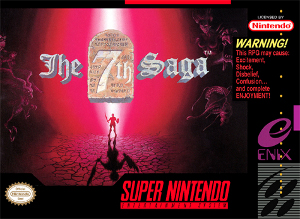 W
WThe 7th Saga is a turn-based role-playing video game developed by Produce! and published by Enix for the Super Nintendo Entertainment System in 1993.
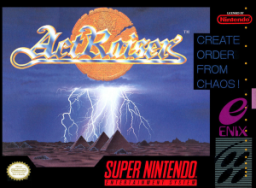 W
WActRaiser is a 1990 platform and city-building simulation game for the Super Nintendo Entertainment System developed by Quintet and published by Enix, combining traditional side-scrolling platforming with urban planning god game sections. A sequel, ActRaiser 2, was released for the Super NES in 1993. In 2007, ActRaiser became available on the Wii's Virtual Console download service in Europe, North America, and Japan. A version of the game was also released for European mobile phones in 2004.
 W
WActRaiser 2 is a side-scrolling platform game for the Super Nintendo Entertainment System developed by Quintet and published by Enix in 1993.
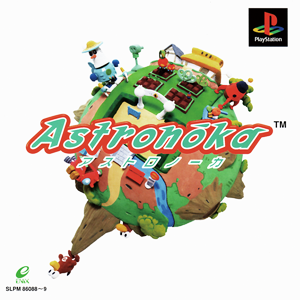 W
WAstronōka is a 1998 farm simulation game developed by MuuMuu and System Sacom. It was released in Japan only.
 W
WBrain Breaker is a side-scrolling action-adventure platform game released for the Sharp X1 in 1985. It is an early example of the Metroidvania genre.
 W
WBrain Lord (ブレインロード) is an action role-playing video game developed by Produce! and published by Enix for the Super NES. It was only released in Japan and North America.
 W
WBust a Groove is a hybrid music/fighting video game for the Sony PlayStation released in 1998. The game was published by the Japanese video game developer Enix in Japan and brought to the U.S. by now-defunct 989 Studios and SCEE in Europe.
 W
WBust a Groove 2 is a hybrid music/fighting game released in 1999 for the Sony PlayStation and is the sequel to Bust a Groove. The game was originally released in Japan as Bust a Move 2: Dance Tengoku Mix , and was never released in Europe. A third game in the series, Dance Summit 2001 was only released in Japan on the PlayStation 2.
 W
WDoor Door is a 1983 single-screen platform video game developed and published by Enix in Japan. Originally released for the NEC PC-8801, it was ported to a number of other platforms, including the Family Computer. Controlling a small character named Chun, the player is tasked with completing each stage by trapping different kinds of aliens behind sliding doors. Chun can jump over the aliens and climb ladders, and must also avoid obstacles such as large nails and bombs.
 W
WDragon Buster is a platform, dungeon crawling action role-playing game that was developed by Namco and released in 1985. It runs on Namco Pac-Land hardware, modified to support vertical scrolling. In Japan, the game was ported to the Family Computer, MSX and Sharp X68000; the latter version was later released for the Virtual Console in the same region on November 18, 2008. Dragon Buster has been ported for the PSP and is available as part of Namco Museum Battle Collection. It was followed by a Japan-only Famicom sequel, Dragon Buster II: Yami no Fūin, and was later followed by the PlayStation game Dragon Valor, which was both a remake and sequel.
 W
WDragon Quest II: Luminaries of the Legendary Line, titled Dragon Warrior II when initially localized to North America, is a role-playing video game developed by Chunsoft and published by Enix in 1987 for the Nintendo Entertainment System as a part of the Dragon Quest series. Enix's U.S. subsidiary published the American release, Dragon Warrior II, for the Nintendo Entertainment System in 1990. Dragon Quest II is set one hundred years after the events of the first game.
 W
WEndonesia (エンドネシア), sometimes Endnesia or Exotica, is an adventure video game for the PlayStation 2. The game was developed by Vanpool and published by Enix exclusively in Japan on May 31, 2001.
 W
WE.V.O.: Search for Eden is a side-scrolling action video game developed by Almanic Corporation and published by Enix for the Super Nintendo Entertainment System. Released in 1992 for Japanese audiences, the game was later translated and released in North America in 1993. Combining traditional platforming mechanics with experience and leveling mechanics originating from role playing games, E.V.O.: Search for Eden involves the player navigating a creature through a number of side-scrolling levels while undergoing bodily evolution to cope with ever-changing environments. It is heavily based on Almanic's original title, 46 Okunen Monogatari ~The Shinka Ron~, released exclusively in Japan for the PC-9801 home computer in 1990.
 W
WGrandia II is a role-playing video game developed by Game Arts originally for the Dreamcast console as part of their Grandia series. Initially released in Japan in August 2000 by Game Arts, the game was later made available in English for North America the following December, and in Europe in February 2001, with both releases published by Ubi Soft. The game was later ported to the Sony PlayStation 2, where it was released worldwide throughout 2002, and later for Microsoft Windows exclusively in North America and Europe later that year. An enhanced port, based upon the Dreamcast version and entitled Grandia II Anniversary Edition was released on August 24, 2015 on Steam and GOG.com. A high-definition remaster of the game was released in North America and Europe on August 16, 2019, together with one of the original, for Nintendo Switch; an associated update for the Windows PC Anniversary Edition was released on October 15, 2019. GungHo Online Entertainment clarified that a Japanese release of the remasters will follow in the future.
 W
WGrandia Xtreme is a role-playing video game developed by Game Arts and published by Enix for the PlayStation 2 video game console. The game is a side story in the Grandia series.
 W
WIllusion of Gaia, known in Europe and Australia as Illusion of Time, is an action role-playing game developed by Quintet for the Super Nintendo Entertainment System.
 W
WJesus is a graphic adventure game developed and published by Enix. It was first released in 1987 on the PC-8801, FM-77AV, X1, and the MSX2 and was later ported to the Famicom in 1989 under the title Jesus: Kyōfu no Bio Monster . In 1991, a sequel titled Jesus II was released on the PC-8801, PC-9801, and X68000.
 W
WJust Breed is a tactical role-playing game published by Enix for the Family Computer. It was released exclusively in Japan in 1992. Although it is somewhat obscure and was overlooked due to its late release, it is notable for its long development and as one of the largest RPGs created for the Family Computer.
 W
WJyutei Senki is a 1993 science fiction video game for the Super Famicom. It was published by the Enix Corporation.
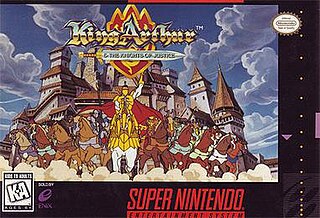 W
WKing Arthur & the Knights of Justice is an action-adventure game developed by Manley & Associates and published by Enix for the Super Nintendo Entertainment System in May 1995. Based on the cartoon series of the same title, which was loosely inspired by the Arthurian legend, the game was released in North America exclusively.
 W
WLove Story, stylized as Ø Story, is a Japanese exclusive adventure interactive movie video game developed by General Entertainment and published by Enix on April 27, 2000. It was the first Enix game published on the PlayStation 2, and was part of the campaign to promote the release of the console in Japan.
 W
WMischief Makers, released in Japan as Yuke-Yuke!! Trouble Makers is a 1997 side-scrolling platform video game developed by Treasure and published by Enix and Nintendo for the Nintendo 64. The player assumes the role of Marina, a robotic maid who journeys to rescue her creator from the emperor of Planet Clancer. The gameplay revolves around grabbing, shaking, and throwing objects. There are five worlds and 52 levels, and the game is displayed in 2.5D.
 W
WMurder on the Eurasia Express is an interactive movie and adventure video game developed by System Sacom and published by Enix for the PlayStation in 1998. It was released exclusively in Japan and is the first game in the "Cinema Active" series, followed later by Love Story (2000) on the PlayStation 2. The game is presented entirely in live-action full motion video and stars several Japanese idols.
 W
WMystic Ark is a 1995 role-playing video game developed by Produce! and published by Enix for the Super Famicom. The video game was only released in Japan. Mystic Ark has strong similarities to the games The 7th Saga and Brain Lord, also developed by Produce and distributed by Enix. The game was being localized for a North American release under the title 7th Saga II, but the release was cancelled.
 W
WNanatsu Kaze no Shima Monogatari is a 1997 graphic adventure video game developed by Givro Corporation and published by Enix for the Sega Saturn. The last game to be created by Givro prior to their dissolution in 1998, the title takes place on a mysterious island, as players assume the role of a dragon named Gaūpu to meet various creatures inhabiting the location while harnessing seven legendary winds to overcome obstacles. It received positive reception from critics and reviewers alike, with high praise given towards its hand-drawn visuals.
 W
WOgre Battle: The March of the Black Queen is a real-time tactical role-playing video game developed by Quest and released in Japan in 1993, and in 1995 in North America for the Super Nintendo Entertainment System. It is the first installment of the Ogre Battle series. It was directed by Yasumi Matsuno and designed by Matsuno and Akihiko Yoshida. The story of Ogre Battle focuses on a band of rebels as they lead a revolution against a corrupt reigning Empire, ruled by an evil Empress.
 W
WPaladin's Quest, originally released as Lennus: Kodai Kikai no Kioku in Japan, is a utopian/dystopian science fantasy role-playing video game developed by Copya System and published in Japan by Asmik Corporation on November 13, 1992, for the Super Nintendo Entertainment System. It was published in North America by Enix in October 1993. It was different from other role-playing games at the time, because when the player casts magic, it takes away HP instead of MP.
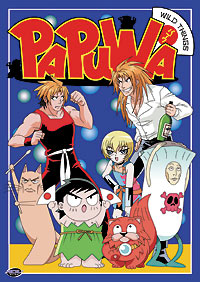 W
WPapuwa (パプワ)(stylized PAPUWA) is a Japanese manga series written and illustrated by Ami Shibata and adapted into a 26-episode anime of the same name. The series follows Kotaro who is stranded on an uncharted island inhabited by strange talking animals and has no memory of his past. PAPUWA is the sequel to Shibata's 1991 series Nangoku Shōnen Papuwa-kun , serialized in Enix's manga magazine Monthly Shōnen Gangan from April 1991 to June 1995. That series was adapted into a 42-episode anime television series which aired on TV Asahi from 10 October 1992 to June 1995.
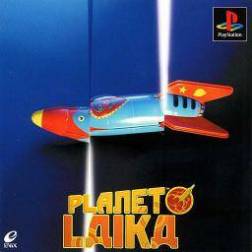 W
WPlanet Laika (プラネットライカ) is a role-playing video game developed by Quintet and Zeque for the PlayStation home game console. The game follows the main character, Laika, through a mission to Mars which forces the player to manipulate Laika's multiple-personality disorder in order to solve puzzles. All the characters in the game have dog heads, a possible reference to the Soviet space dog Laika. The game was only released in Japan.
 W
WPortopia Renzoku Satsujin Jiken , often translated to The Portopia Serial Murder Case in English, is an adventure game designed by Yuji Horii and published by Enix. It was first released on the NEC PC-6001 in June 1983, and has since been ported to other personal computers, the Nintendo Famicom, and mobile phone services.
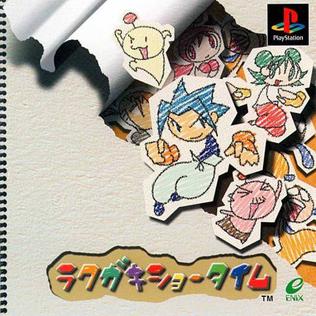 W
WRakugaki Showtime is a 1999 fighting game for the PlayStation developed by Treasure and published by Enix. It is a full 3D battle arena fighting game, featuring characters that resemble crayon drawings. It was only released in Japan.
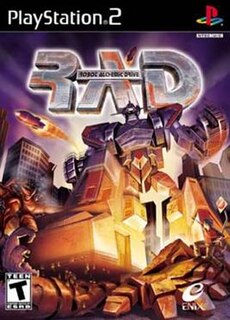 W
WRobot Alchemic Drive, known in Japan as Gigantic Drive, is a PlayStation 2 video game developed by Sandlot and published by Enix. It was released in Japan and North America.
 W
WRobotrek, known in Japan as Slapstick , is a role-playing video game released in 1994. It was published by Enix and developed by Quintet and Ancient for the Super Nintendo Entertainment System.
 W
WSoul Blazer, released in Japan as Soul Blader , is a video game for the Super NES developed by Quintet and published by Enix. Soul Blazer was scored by Yukihide Takekawa. It was released in 1992 in Japan and North America, but not released in Europe until 1994.
 W
WStar Ocean is an action role-playing video game developed by tri-Ace and published by Enix for the Super Famicom. The first game in the Star Ocean series, it was released only in Japan in July 1996, and was the first game developed by tri-Ace, consisting of staff that had previously left Wolf Team due to being unhappy with the development process for Tales of Phantasia with Namco in 1995. The game used a special compression chip in its cartridge to compress and store all of the game's data due to possessing graphics that pushed the limits of the Super Famicom. Additionally, the game had voice acting for the game's intro and voice clips that played during the game's battle gameplay, a rarity for games on the system.
 W
WStar Ocean: Blue Sphere is an action role-playing video game developed by tri-Ace and published by Enix for the Game Boy Color handheld video game console in June 2001. It is a spin-off entry in the Star Ocean series, acting as a direct sequel to the 1998 PlayStation title Star Ocean: The Second Story. It was later remade for mobile devices, releasing in 2009.
 W
WStar Ocean: The Second Story is an action role-playing video game developed by tri-Ace and published by Enix for the PlayStation. It is the second game in the Star Ocean series and the first game in the series to be released outside Japan, arriving in North America in May 1999 and Europe in April 2000, by Sony Computer Entertainment. Taking place in a science fantasy universe, the story centers around a young man named Claude Kenni, a cadet from a space-faring Earth organization who is stranded on an undeveloped, medieval-level planet. There, he meets several companions and must stop a plot from an evil organization that spans multiple worlds before finding his way home. The game was the basis of manga and anime adaptations.
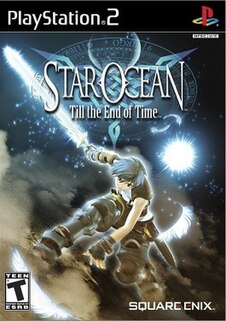 W
WStar Ocean: Till the End of Time is an action role-playing game, the third main game in the Star Ocean series. The game was developed by tri-Ace and published by Square Enix for the PlayStation 2 console. It was released in Japan, North America, and the PAL territories. The original Japanese release date was in February 2003 by Enix, its penultimate release before its merger to become Square Enix. It was re-released in 2004 as a two-disc Director's Cut version with bonus features such as new characters and dungeons. The North American and European versions are based on the Director's Cut version. Till the End of Time takes place four hundred years after the events of Star Ocean: The Second Story.
 W
WTerranigma, known as Tenchi Sōzō in Japan, is a 1995 action role-playing game for the Super Nintendo Entertainment System developed by Quintet. Manga artist Kamui Fujiwara is credited with the character designs. Terranigma tells the story of the Earth's resurrection by the hands of a boy named Ark, and its progress from the evolution of life to the present day.
 W
WValkyrie Profile is a role-playing video game developed by tri-Ace and published by Enix for the PlayStation. It was released on December 22, 1999 in Japan and on August 29, 2000 in North America. Inspired by Norse mythology, Valkyrie Profile follows the titular valkyrie, Lenneth, as she travels through Midgard, collecting the souls of slain heroes to serve either as einherjar or her personal companions for Ragnarok - the battle to decide the fate of all creation - and trains them by fighting monsters and performing additional quests. As she journeys, she learns more about her original human life, removed from her memory upon becoming a Valkyrie.
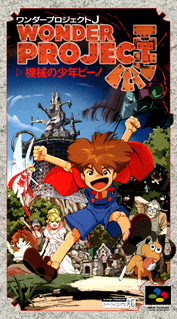 W
WWonder Project J is a 1994 life simulation video game developed by Almanic Corporation and published by Enix for the Super Famicom. In the game, players take care of a boy Gijin (robot) created by Dr. Geppetto named Pino. Directed by Takashi Yoneda, the title was created by most of the same personnel that worked on previous projects at Almanic such as E.V.O.: Search for Eden. It was met with positive reception from critics and sold over 1.3 million copies in Japan, making it one of the best-selling Super Famicom games. A sequel, Wonder Project J2, was released in 1996 for the Nintendo 64.
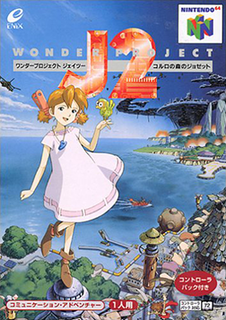 W
WWonder Project J2 is a 1996 life simulation video game developed by Givro Corporation and originally published by Enix for the Nintendo 64. It is the sequel to Wonder Project J, which was released earlier in 1994 for the Super Famicom.